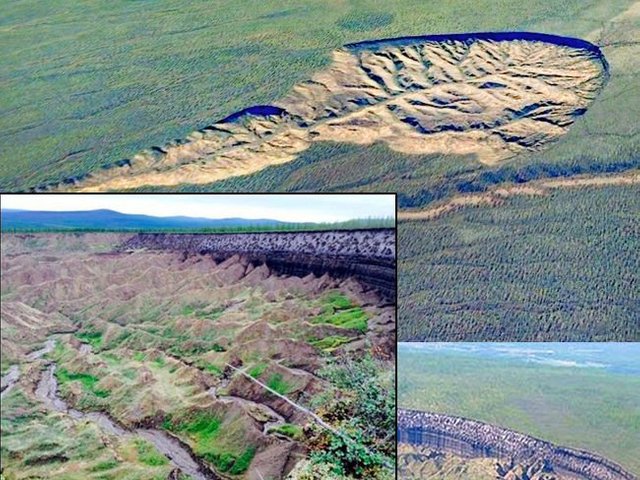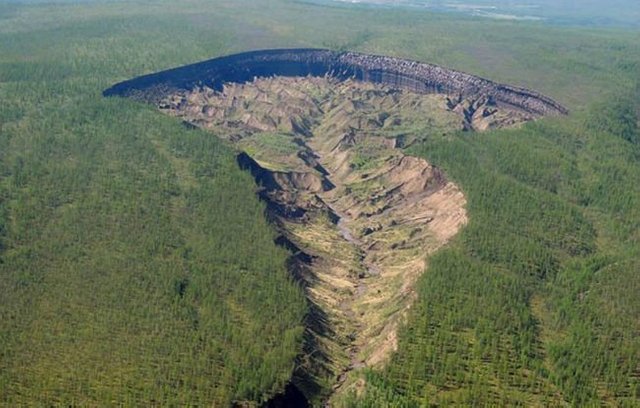the gate of the UNDERWORLD in siberia
The 'gate to the underworld' gets even deeper in Siberia, revealing prehistoric forests
The increasing size of the crater threatens the climate around the planet

In Siberia there is a crater so gigantic and deep that it is known as "the gateway to the underworld". Located 660 kilometers north of Yakutsk, it is known that it began to form in the decade of the 60 when great part of the forest of the zone was felled. Without shade to protect the ground from the rays of the sun, the permafrost melted and the ground sagged catastrophically.
The big hole was named Batagaika and 50 years later worries because it does not stop growing. With almost a kilometer of length and until 100 meters of depth, it is feared that in a few months it will reach the neighboring valley.
Last year, an investigation revealed that in the last decade the hole has become deeper at a rate of ten meters per year, although in especially hot years the growth has reached up to 30 meters. The great floods of 2008 helped increase their size, and now, as Earth's fever rises because of global warming, geologists warn that the crack will grow much more.

That the crater continues to grow at a rate that seems unstoppable is not only a danger for the locals, the whole world will be affected. The removal of the permafrost could lead to the release of large amounts of greenhouse gases that houses the tundra under its surface.
"Global estimates of stored carbon suggest that permafrost contains the same amount of gas that is currently in the atmosphere," Frank Günther, the study's lead author, told the BBC.
The planet will suffer the blow of the exhausted greenhouse gases, which will mean more heat. A feedback that only makes things worse.
Siberia
For the only thing that has served the melt has been to take samples of a soil that was unknown, as well as to find frozen remains of an ox, a mammoth and a horse of 4,400 years old. Last month it was published that the sediments of the land are 200,000 years old and can give clues about what happened in the past when the last permafrost thawed after the end of the Ice Age.
"Ultimately, we are trying to see if climate change during the last Ice Age in Siberia was characterized by great variability: warming and cooling, warming and cooling, as happened in the North Atlantic region," said geologist Julian Murton Of the University of Sussex that traveled to the zone and directed the study.
While there is evidence of what happened in Greenland, China or Antarctica, the history of Siberia is unknown. Knowing it, they argue, would be better prepared for what can come. To gather more data, some holes in the region are drilled to analyze more sediments.
nice post :) very interesting!!
thank´s follow4follow